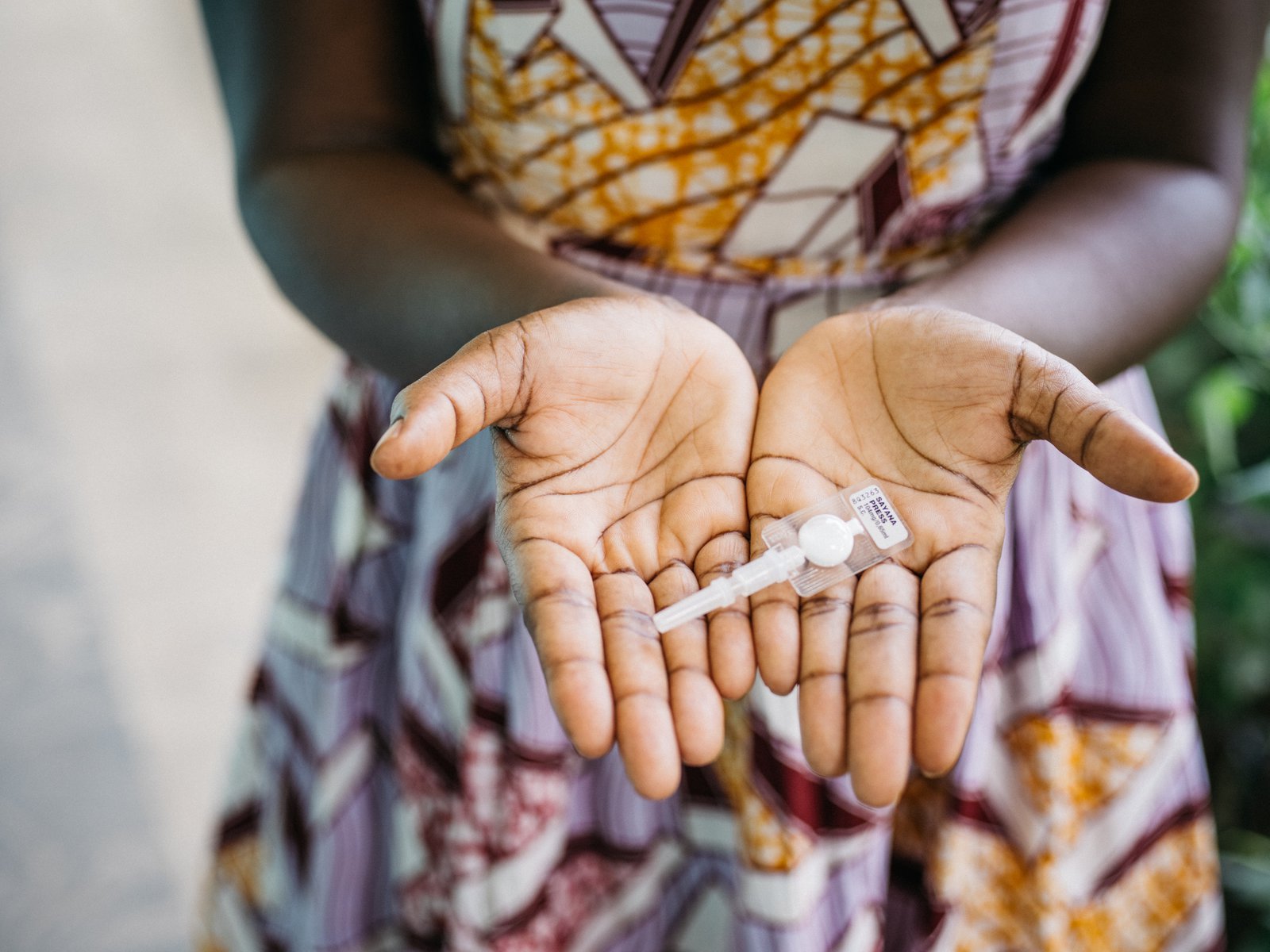Never before has there been such rapid and far-reaching change in technology, economies, and societies. At PATH, we embrace these new opportunities to move humanity forward.
But we must ensure that no one gets left behind in the process—especially women and girls living in the poorest and most vulnerable parts of the world.
How we rise to the challenge of empowering half the world’s population to live full, healthy, prosperous, and equal lives will define not only our generation, but those to come.

PATH and our partners are working to bring a one-size fits-most diaphragm to more women around the world. Photo: MatCH Research, South Africa.
There is general acknowledgment in the development sector of three big levers essential to empowering women and girls.
The first is education. No society has escaped poverty or developed economically without education for women and girls. PATH partners in countries all over the world to teach women and girls about their options to live healthier more productive lives.
The second lever is access to and control over economic resources. Women are more likely than men to save, spend, and invest resources—from jewelry and livestock to cash and digital currency—to support the health and well-being of their children and the entire family.
My colleagues and I focus on the third lever: sexual and reproductive health care.
We know that empowering women and girls to define the terms of their own sexual and reproductive lives, to regulate their own fertility, and to decide whether, when, and with whom they’ll have children, is an essential building block for healthy families and thriving societies. It is also critical to achieving the Sustainable Development Goals.
It is unconscionable that, despite progress made in many parts of the world, more than 200 million women who want to use modern contraceptives are unable to do so. They either lack access altogether or are thwarted by social, cultural, and economic barriers or by a non-responsive health system.

Focus group discussion with girls on sexual and reproductive health.
At PATH, we believe in the power of innovation to help us reimagine and shape a more just, equitable, and healthy world for millions of women, girls, and families. A world where:
- Women not only reap the benefits of innovation as consumers and end users, they are leaders and creators of the tools, systems, and services they want and need.
- They are emboldened with knowledge, voice, and agency to seek out quality health care regardless of where they live or their ability to pay.
- Health systems are person-centered and rights-based.
It is a difficult journey to realize our vision of the future. But the glass is half full.
Innovation for women, by women
PATH’s work in sexual and reproductive health is guided by the principles of choice, equity, and dignity for all women.
Through private sector partnerships, we’ve invested in transformative tools like DMPA-SC, an all-in-one contraceptive that puts women in charge of their own reproductive health. We’re also exploring ways to leverage novel devices like the microarray patch to widen the protection options available to women.

A Senegalese woman holds the first injectable contraceptive that is small and simple enough for women to administer themselves. DMPA-SC (brand name Sayana Press) provides three months of protection. Photo: PATH/Gabe Bienczycki.
Additionally, we look for opportunities to empower women with knowledge about their bodies and their rights. For example, in Uganda, we’re working with local women’s groups to bring reproductive health information into community-led forums.
In Senegal, we’re training health care providers so that they can better listen to and understand the needs of their clients. At the same time, we’re equipping women with knowledge and skills to be confident, informed advocates of their own health and to articulate their needs to health care providers.
We believe this approach can be transformational for women and men, girls and boys. What’s more, we believe that both critical health information and critical thinking skills are core assets needed to accelerate progress.

Photo PATH/David Jacobs.
Self-care is also a growing area of interest for my team (and others in the field). Broadly defined, it is the ability of individuals, families, and communities to manage and maintain their health with or without the support of health care providers. We have an opportunity to seize the momentum around self-care by strategically applying it in the sexual and reproductive health context.
These and other innovations are powerful tools that can bring us closer to equity in sexual and reproductive health and rights for women and girls. We also need the commitment of governments, funders, and development partners to maintain accountability on our ambitious goals.

Women exercise on the banks of the Mekong River in Vientiane, Laos. Photo: PATH/Aaron Joel Santos
A pivotal moment
Today, we face two distinct paths with two very different outcomes.
On one path, the global community doubles down on its investments in women and girls. We continue to prioritize innovation and access to safe, effective, and affordable health care. We realize health equity as a human right for half the world’s population.
On the other, we accept the status quo, allowing inaction to stall progress—or, worse, undo it. We admit that political, social, and economic pressures are too great. That the future of the world’s most powerful agents of change has been decided for them.
At PATH, we choose the former. We choose to look forward and leave no one behind. We reject the status quo because we know that when the world prioritizes the health and wellbeing of women and girls, extraordinary things happen.



